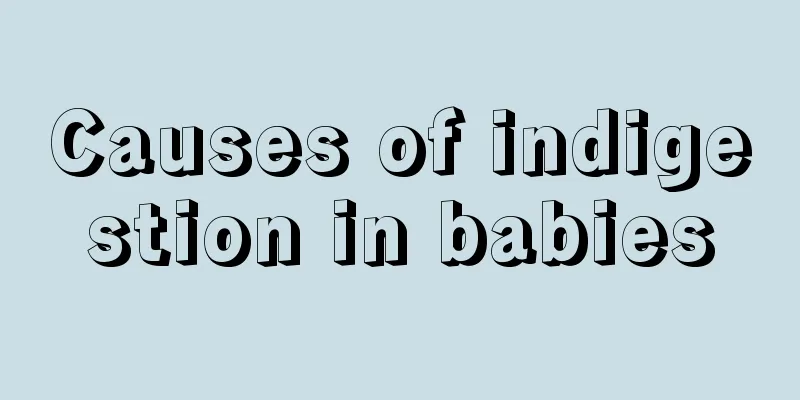The child convulses after crying

|
Children may have convulsions after crying loudly. This is a reaction caused by excessive emotional excitement. Parents do not need to be too nervous. They should pay more attention to observing their children's physical changes. If other symptoms occur, they should take them to the hospital for treatment. This may not be caused by too many emotional fluctuations. At this time, appropriate treatment measures should be found. Hemifacial spasm, also known as clonic facial spasm, is characterized by twitching contractions of the facial muscles on one side[1]. The disease can occur at any age, including children, but it is more common in middle-aged women. Idiopathic cases are more common, or they may be temporary or permanent sequelae of idiopathic facial nerve paralysis. The cause of hemifacial twitching is unclear, but it may be caused by ectopic excitation or pseudo-synaptic transmission of the facial nerve. Surgical and autopsy materials have confirmed that facial muscle spasm is caused by some kind of compression that causes pathological interference in the conduction of the facial nerve. In most patients, it is caused by normal vascular cross-compression, such as compression of the posterior inferior cerebellar artery, the anterior inferior cerebellar artery, and the vertebral artery. Occasionally, it is caused by compression of the facial nerve root by an aneurysm, arteriovenous malformation, or brain tumor. A very small number of patients experience hemifacial muscle spasms after trauma, tumors or surgery. Pathogenesis: Mechanical compression caused by vascular crossing can squeeze nerve fibers together, causing them to lose their myelin sheath and lead to a short circuit of the action current between nerve axons. This is the pathological mechanism that causes hemifacial muscle spasms. EEG, SPECT scan, and PET scan are available. Intracranial space-occupying lesions can be located and qualitatively diagnosed by cranial X-rays, brain CT and MRI examinations; cerebrovascular lesions can be diagnosed by cerebrovascular function monitoring, transcranial Doppler and angiography (pneumoencephalography, ventriculocerebrovascular angiography). 3D-TOF magnetic resonance angiography can clearly show the abnormal dilation or hyperplasia of blood vessels around the facial nerve, allowing us to understand the compression of the facial nerve. Therefore, this method is currently the best imaging examination method for diagnosing the cause of hemifacial twitching. Somatosensory evoked potentials and brainstem evoked potentials (auditory and visual evoked potentials) are of great significance for the localization and diagnosis of cranial nerve and muscle lesions. |
<<: What foods can easily cause a sore throat in babies
>>: Baby eyeliner to judge eye size
Recommend
Symptoms of a cold in a one-month-old baby
The body of a one-month-old baby is still relativ...
What to do if your baby eats less
Nowadays, parents with children are usually very ...
Can children soak their feet when they have a fever?
It is normal for children to have poor body resis...
What is the cause of pimples on children's eyes?
It is quite common for children to have pimples o...
Nine nutrients necessary for children's growth and development
Nutrition experts say that children's bodies ...
What is going on when a child crosses his eyes?
Cross-eyes, also known as strabismus, refers to t...
How many teeth should be replaced?
Nowadays, many families have only one baby. Many ...
The amniotic fluid was normal but a baby with Down syndrome was born
We all know that pregnant women have to undergo D...
What to do if your newborn baby has chapped lips
The reason for the chapped lips of newborns is de...
Causes and solutions for repeated low-grade fever in babies
It is normal for babies to have a fever. Because ...
Causes of retinal hemorrhage in premature infants
Every child is full of hope for the family. Often...
What is the cause of enuresis in children?
Enuresis, also known as bedwetting, is a common c...
What are some soups that are good for children's appetite?
When children are young, their spleen and stomach...
How to treat peeling of children's feet
Our children are our treasures. It is not easy to...
What should children eat if they don't grow taller?
I believe that as a parent, you are not only worr...









